Hadassah
Hadassah Convention 2010: 360° of Innovation
|
Getting your Trinity Audio player ready...
|
 Maybe it was because it had been two long years since delegates had seen one another at a full-scale Hadassah convention. Or maybe it was being reminded that during those two difficult years the organization to which they are all dedicated not only survived but continued to shine. Whatever the explanation, Hadassah’s 95th national convention at the Westin Diplomat Resort & Spa in Hollywood, Florida, held from July 25 to 28, felt both substantive and celebratory from the start.
Maybe it was because it had been two long years since delegates had seen one another at a full-scale Hadassah convention. Or maybe it was being reminded that during those two difficult years the organization to which they are all dedicated not only survived but continued to shine. Whatever the explanation, Hadassah’s 95th national convention at the Westin Diplomat Resort & Spa in Hollywood, Florida, held from July 25 to 28, felt both substantive and celebratory from the start.
The reminder of Hadassah’s élan began at the opening plenary. Hadassah staff who were part of the Israeli medical mission to Haiti described how they set up the first field hospital after the earthquake last January and ultimately served more than 1,000 patients in tents on a soccer field. Showing one of his slides to delegates, Dr. Shir Dar, a gynecologist from the Hadassah Medical Center, noted, “You can see it’s pretty much like any other labor and delivery room, except for the grass.” He added that one mother whose child was delivered alive after doctors thought he had died in utero named the baby Israel.
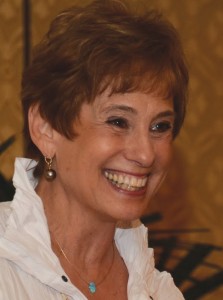
All photography by Arnie Axelrod,
Mark Gluckman and Michael Marko.
Dr. Dar was a fitting messenger for an organization rooted in healing that has often relied on the art of improvisation. When she opened the convention, Hadassah National President Nancy Falchuk cited the innovations at work when Hadassah doctors pioneered computer-directed hip replacement and when Hadassah’s founders, without BlackBerrys or the Web, helped build the Jewish state.
A broad spectrum of such revolutionary thinking and action took center stage at this convention, the theme of which was “360° of Innovation.”
Then again, the convention could have also been called “What You Don’t Know About Hadassah” or “Modern-Day Miracles and the Quest for Tikkun Olam” or even “Zionism: A Love Story.” They would all be true as speakers revealed the layers of altruism and achievement behind Hadassah’s identity.
One of those layers is Hadassah’s new partnership with Susan G. Komen for the Cure, which this October launched the first Race for the Cure in Israel.
And yet, cancer is poorly understood, said Nancy G. Brinker, founder and chief executive officer of the organization named for her late sister, to whom she made a promise to fight the disease. Although cancer claims seven million lives a year—more than HIV and malaria combined—there is no word for cancer in 30 countries, said Brinker, the World Health Organization’s goodwill ambassador for cancer control. She told delegates at a convention plenary on breast cancer that lack of understanding “leads to unnecessary
fears and unnecessary deaths.”
Brinker, a breast cancer survivor herself, would know. America in the 1970s was so uninformed about the disease that her sister not only suffered ill-advised treatment but pariah status. People “crossed the street when they saw her,” Brinker recalled. Komen and Hadassah, she added, will join together to reach the places where cancer has no name—to “the forgotten people of the world,” which, in turn, “becomes a fight against discrimination.”
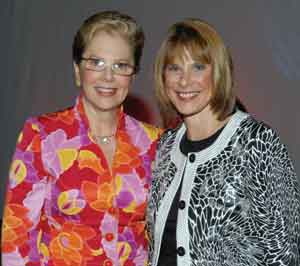
Convention cochairs (and sisters-in-law) Jean and Laurie Weitz heralded the power and purpose of collaboration—of which the Komen-Hadassah alliance is but one example. “We come together here with all of our energy and resources, with all of our experience and determination, to renew our promise,” Laurie Weitz said at the convention opening. Indeed, by connecting with each other and their beneficiaries, delegates felt a jolt of pride in Israel and Zionism. “Coming to convention is a gift you give yourself,” Jean Weitz remarked.
Hadassah delegates giddily greeted each other in the hotel hallways and elevators and marveled at the reach of their work. For delegate Ellen Gosge of Chicago, learning about Hadassah College Jerusalem and the Jewish National Fund at a plenary on Hadassah’s projects “tied it all together to make Hadassah one unit,” she said. “I didn’t know the things Hadassah did other than the hospitals and the kids.”
And, of course, as an organization, Hadassah demonstrated myriad examples of coming together to support Jews, Israel and the world. Take, for example, the team effort to save an American teenager in Israel. When 16-year-old Jessa Perrin traveled to Israel with her Jewish federation and suddenly fell deathly ill, Hadassah doctors took elaborate steps to save her. Perrin needed a liver transplant, and the Israeli doctors ultimately located one at New York–Presbyterian Hospital. Hadassah doctors accompanied her on a chartered El Al plane to New York, where she arrived barely clinging to life.
“To save my child’s life,” said Bonnie Ullner, Jessa’s mother, “the [doctors] performed miracle after miracle.” Addressing delegates at a plenary focused on Hadassah’s hospitals, she added: “Without your countless hours and days and years of giving to Hadassah [of] your time and money, none of this would be possible. Jessa is a living, breathing example of what you do every day.”
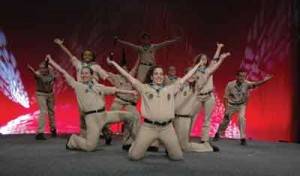
Ullner was not the only one who came to deliver a personal thank-you. Earlier that day, Reut Shasha, raised under the shadow of bombs in Kiryat Shmona in the north of Israel, described how she found her passion in photography and waited tables to save up for her first year at Hadassah College Jerusalem, where she studies photography. “I just want to touch people and photography allows me to do that,” said Shasha. She has drawn from her own suffering—having battled an eating disorder for more than a decade—to capture the humanity of disabled Israelis in photos that get beyond the wheelchair. In her second and third year, Shasha said Hadassah scholarships are helping her finance the program that offers “the best technological advantages that I can ask for” and “a warm and family-like environment.”
You might even say Hadassah gave Shasha a few extra Jewish mothers (and even a father): When she left campus to care for her own mother, who was hospitalized after a car accident, Shasha’s teachers called her nightly to check on both of them.
Laudatory remarks also came from the highest levels of the Israeli government. “Hadassah is making a real difference every day in the lives of Israelis,” said Mark Regev, spokesman for Prime Minister Benjamin Netanyahu, by video feed at the opening session. In appreciation for such support, “I want to say two words: Thank you.”
Regev’s message was followed by an in-person appearance by his deputy, Jordana Luks Cutler, who extolled Hadassah’s contribution to the Jewish state. “When Henrietta Szold first visited [Palestine in 1909], it was a land plagued by poverty, disease and malnutrition,” she said. “[Today,] your state-of-the-art hospitals serve tens of thousands of people daily.”
Lest anyone be left out from offering gratitude, a man-on-the-street video captured Israelis of all stripes saying “Toda rabba, Hadassah, and mazal tov” on its approaching centennial. Well-wishers included a man selling halla at a stand in Jerusalem’s Mahane Yehuda market, a pack of young men wearing “I (heart) God” T-shirts on a busy street and a beach lifeguard, who amplified the greeting by megaphone.
Among Hadassah’s most innovative projects is its newest hospital building, the Sarah Wetsman Davidson Tower, a high-tech fortress of healing slated to open in 2012 to coincide with Hadassah’s centennial celebration. “We are not waiting for the future,” said Dr. Shlomo Mor-Yosef, director general of the Hadassah Medical Organization. “We are building the future.” Just as past generations built Hadassah’s hospitals at Mount Scopus and Ein Kerem, Dr. Mor-Yosef told delegates at the HMO plenary that the new tower is “the mission of our generation,” a 19-story, energy-efficient complex replete with underground facilities, healing gardens and cutting-edge research and treatment. Finishing the project requires $100 million, a goal Dr. Mor-Yosef is confident of reaching.
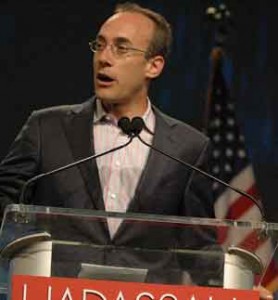
Naturally, delegates were interested not just in Hadassah’s projects but also in Israel’s success stories. Dan Senor, coauthor of Start-up Nation: The Story of Israel’s Economic Miracle (Twelve), moderated a panel on innovation that featured exemplars of Israeli entrepreneurship. In explaining how Israel became a high-technology powerhouse, he cited an Army culture that begets leadership and maturity and an immigrant culture weaned on the trial-by-fire education of daily problem solving.
“An immigrant is the essential entrepreneur,” Senor continued. “While other countries [debate] how to stem immigration, Israel absorbed 20 percent of its population in a decade.”
On the panel led by Senor, Jonathan Medved, cofounder of a phone video-sharing company called Vringo, discussed the various Israeli products that permeate daily life around the world, from the Intel chips in laptop computers to Teva Pharmaceuticals, one of the world’s largest producers of generic drugs. Michael Granoff, head of oil independence policies for Better Place, discussed his company’s mission to produce electric vehicles and related infrastructure that will free countries from oil, starting with Israel in 2020.
There was little room, however, for resting on laurels. Talk of Israel and Hadassah’s achievements came paired with calls to action—the need to broaden access to health care, careers and opportunity within Israel and the imperative to rally support for the Jewish state.
Henrietta Szold’s instruction to a sculptor fashioning her likeness became a convention refrain: “Make my eyes look to the future.” For Nava Ben-Zvi, president of Hadassah College Jerusalem, that means investing in education. “I know about molecules because I’m a chemist,” Ben-Zvi said at the project’s plenary. “I know about people because I love people, and I’m telling you: Education is the thing not only for my children and your children but for the country, for the State of Israel. Through education our economy will blossom. Through education our people will be more content.”
In extolling Hadassah’s role in building Israel, Knesset Member Dalia Itzik said, “We need your devotion and the devotion of your army of 300,000 activists now more than ever.
“These are very dire days for Israel’s image,” Itzik declared at the convention banquet. “The forces of evil are attempting to delegitimize the Jewish state and the Zionist enterprise. We need all of you, our brothers and sisters, to continue to rally and to support us in our very difficult struggle.”
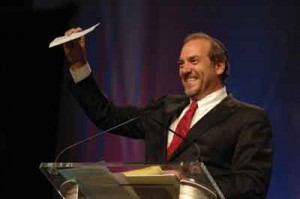
presenting Hadassah with a $1 million check from his group
It was at the banquet that Rabbi Yechiel Eckstein received Hadassah’s Man of Distinction Award. Founder and president of the International Fellowship of Christians and Jews, Eckstein spoke of the sacrifices he sees among his Christians donors: the woman who swapped her gourmet Starbucks drink for a regular coffee to save $2.50 each day for Israel, or those who postpone a new car purchase. “We need to learn from them,” he said, citing the maxim of Jewish responsibility for one another and the impoverishment of many survivors of the Shoah.
“How could it be that the richest Jewish community in the world, in the history of mankind, can’t afford to feed and clothe [Holocaust survivors]?” Eckstein asked. But he had high praise for Hadassah’s work. “You, my friends, are the most revered organization around,” he said. “For you, Hadassah is a way of life, expressing and embodying the values we hold dear. Hadassah is the bridge for hundreds of thousands of Jews to Israel and the Jewish people. We in the Jewish community need Hadassah more than Hadassah needs us.”
Eckstein added teeth to his thesis—and elicited a chorus of gasps and cheers—by presenting Hadassah with a check from his group for $1 million.
If excitement had been palpable throughout the convention, it reached a peak as Nancy Falchuk accepted the gift. And while excitement and inspiration cannot be measured precisely, there was no difficulty in seeing that this convention brought Hadassah back to the organization’s best fund-raising days: Over the course of three days, donors gave $10.6 million; total income for the year is $133,331,000.
As the gathering drew to a close, Joan Baron of Boynton Beach, Florida, had already sprung into action, working on a petition to free Israeli Gilad Shalit, kidnapped by Hamas in 2006. “I don’t know how an organization becomes a lifestyle and gets into your soul,” Baron said, becoming teary-eyed when talking about Hadassah. “It makes you care. It makes you aware. It makes you concerned. It makes you a better person.”
Avraham Infeld, the popular educator and former president of Hillel, spelled out the central Zionist goal at the closing plenary. “Our mission is how to ensure the continued, significant survival of the Jewish people,” he asserted. “The Jewish world was not created to support Israel. Israel was created to ensure the continued, significant survival of the Jewish people.
“People, do not underestimate tikkun olam,” he said. “It’s our purpose in life. And we should be doing tikkun olam each and every moment of our time.”
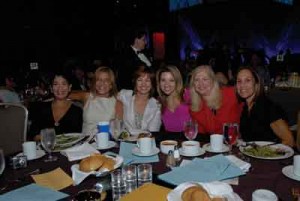
Hadassah practices tikkun olam in large ways, through education and medicine, but also in small ways, one-on-one. In several appearances at convention, David “Dudi” Barashi, a medical clown, touched the hearts of delegates in describing the philosophy of his work to bring smiles to patients, many of whom have little to smile about. Though he does most of his work at Hadassah’s hospitals in Jerusalem, he also traveled to Haiti as part of the Israeli medical mission. Before the convention ended, he also paid a visit to patients at the Chris Evert Children’s Hospital in Hollywood. Even when Hadassah holds a convention, they like to leave comfort in their wake.
“The success of Hadassah and the success of the Zionist movement has been built on a sense of community,” Falchuk said in her closing address. “As a community of women, Hadassah built the social welfare foundations of the State of Israel. We are pushing forward the frontiers of Jewish connections in so many ways,” she added, noting as an example the live online video feed of this year’s convention—so that those who did not attend can still access it at www.hadassah.org.
The convention not only informed members but also spurred action. “We’ve been energized and inspired by one another,” Falchuk said. “Now it’s up to all of us to go back to our communities and pass that energy and inspiration to Hadassah’s wider circle of volunteers.”
HEARD AT CONVENTION
“I’m learning from this group!”
—Rosie Rios, United States treasurer, when asked to offer insight on the women’s advocacy tools of recognition, connection and inspiration
“Hybrids are kind of like Jews. They represent only 2-percent market share, but if you live on either coast, you think there’s a lot more of them.” —Michael Granoff, head of oil independence policies, Better Place
“If Moses applied for a job at Hillel, there’s no way I would have hired him.… He can’t speak. He’s totally inarticulate. He stutters. He can’t keep his nose out of other people’s business.… The entire Torah is Moses said, Moses said, Moses said. When did he listen? Miriam, the entire Torah she doesn’t speak…. You know what she does? She sings and dances. She plays the tambourine, she knows how to get to Jews and touch their hearts…. She brings passion.” —Avraham Infeld, former president of Hillel, on the types of leaders that make a successful team
“What all of our enemies don’t know is that 15 seconds is more than enough time for a Hadassah woman to spring into action.” —Russell Robinson, referring to the alarm in Sderot that alerts residents to seek shelter and the 22,000-square-foot recreation center built by the Jewish National Fund to serve more than 900 a day
“In the eyes of the world, I am just somebody. In the eyes of just somebody, I am the entire world.” —David “Dudi” Barashi, Hadassah medical clown
“This is the biggest audience we ever had in convention. On top of you, right now more than 1,600 people are watching on the Internet.” —Dr. Shlomo Mor-Yosef, director general, Hadassah Medical Organization
“It takes the People of the Book to make a sure thing in the book business.” —Sharon Pomerantz writer and author of acclaimed first novel, Rich Boy (Twelve)
“My friends of Hadassah, you have the cause par excellence. You have the legacy to preserve.” —Rabbi Yechiel Eckstein, founder and president, International Fellowship of Christians and Jews
“I’m not sure that this was their first choice before the earthquake.” —Dr. Shir Dar, gynecologist, Hadassah Medical Organization, referring to the delivery of a Haitian baby named Israel in appreciation of Israel’s emergency aid team
“Hadassah College…helped me organize my life; it gave me a place where I can express myself, express my thoughts, where I’m accepted…. I found a home where I can talk about my problems and my issues and the things I want to do for myself and my art. I just love photography…and Hadassah College is the place that I found that allows me to explore that love….” —Reut Shasha, student, Hadassah College Jerusalem
“It starts in the Torah, when we built the first mishkan in the wilderness, the first tabernacle, and it lists the donors. There’s a record of them, and 2,000 years later we know who were the founders and the benefactors and the sustainers. And that word that’s used is not tzedeka. The word is teruma. Teruma is a gift.… The root of the word to give is to be uplifted. Dear friends and colleagues throughout the world, we have been uplifted by these young people.” —Barbara Goldstein, deputy director, Hadassah’s Offices in Israel, after her plenary interview of Reut Shasha, to whom she suggested donating to Hadassah the $100,000 she will one day earn from the sale of one photograph










 Facebook
Facebook Instagram
Instagram Twitter
Twitter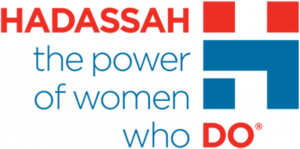
Leave a Reply